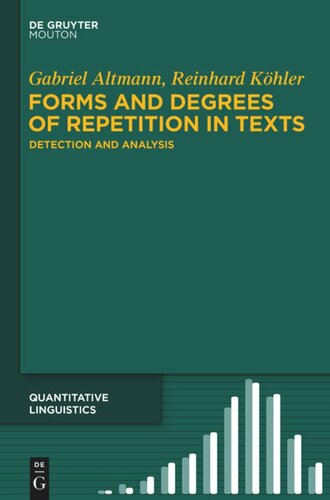

Most ebook files are in PDF format, so you can easily read them using various software such as Foxit Reader or directly on the Google Chrome browser.
Some ebook files are released by publishers in other formats such as .awz, .mobi, .epub, .fb2, etc. You may need to install specific software to read these formats on mobile/PC, such as Calibre.
Please read the tutorial at this link: https://ebookbell.com/faq
We offer FREE conversion to the popular formats you request; however, this may take some time. Therefore, right after payment, please email us, and we will try to provide the service as quickly as possible.
For some exceptional file formats or broken links (if any), please refrain from opening any disputes. Instead, email us first, and we will try to assist within a maximum of 6 hours.
EbookBell Team

4.3
58 reviewsThe present volume presents objective methods to detect and analyse various forms of repetitions. Repetition of textual elements is more than a superficial phenomenon. It may even be considered as constitutive for units and relations in a text: on a primary level when no other way exists to establish a unit – as in a musical composition (a motif can be recognised as such only after at least one repetition) – and on a secondary, artistic level, where repetition is a consequence of the transfer of the equivalence principle from the paradigmatic axis to the syntagmatic one as showed by R. Jakobson.
The analysis of repetitive elements and structures in texts with objective mathematical means can serve several practical and theoretical purposes, among them:
Characterisation of texts by means of parameters (measures, indicators) as taken from established mathematical statistics or specifically constructed ones in individual cases.
Comparison of texts on the basis of their quantitative characteristics and classification of the texts by the results.
Research for the laws of text, which control the mechanisms connected to text creation. As a remote aim, the construction of a theory of text consisting of a system of text laws. The final attempt of every possible quantitative text analysis is the construction of a text theory. The book illustrates this on examples of such laws and corresponding empirical tests.